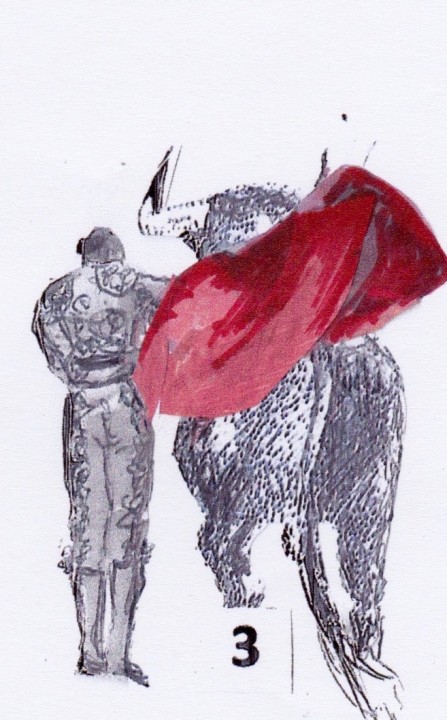
The Suerte de muleta is fundamental to determine the
triumph or failure of the bullfighter. It is in this phase that the
bullfighter, facing the bull alone, must demonstrate his close
and personal idea of what it means to be a bullfighter. At the sound
of the bugles and the drums, the bullfighter receives the red cape
and the sword from the swordsman’s assistant.
If it is the bullfighter’s first bull, he addresses the presidency to request the appropriate permission and after paying homage, or perhaps not, to the
death of the animal, he goes to the bull. The bull will be taken by the
matador’s support team to the place selected by the bullfighter. From there, if the
animal responds, he takes the bull into the middle of the ring, where a sense of solitude is even more pronounced. “La Faena” is a collection of a series of connected steps the bullfighter makes, remaining still while the bull circles him. The bullfighter´s intent, through the power of his cape and not because of the bull´s natural fierceness, is to make the animal charge. The most valued elements in this stage are the excitement of the bullfighter´s execution of steps, together with the courage the bull displays to oppose difficulties. This ends with the “Suerte suprema”, and is followed with the killing of the bull.
Bullfighters can make the bull to charge using his cape in many different ways, one of which is called La Manoletina. Facing the bull the bullfighter holds the cape with both hands behind his back.. This classic way to use the cape was invented by Rafael Dutrús Zamora “LLapisera”, but it was popularized by the great bullfighter Manolete
Bullfighting And Christian Tradition
Ernst Hemingway explained the origin of the word Verónica. The extraordinary painting by Hans Memling illustrates clearly how the Art of Bullfighting has been inspired by the Christian Tradition. The way Saint Veronica holds the Holy Cloth with both hands is the way the bullfighter holds the cape for the start of the Veronica.
“The man who went out with the cape in both hands after the bull had been run, and cited him from in front, standing still as the bull charged, and with his arms moving the cape slowly just ahead of the bull’s horns, passing the bull’s horns close by his body with a slow movement of the cape, seeming to keep him controlled, in the folds of the cape, bringing him past his body each time as he turned and recharged; doing this five times and then finishing off with a swirl of the cape that turned the man’s back on the bull and, by cutting the bull’s charge brusquely, fixed him to the spot; that man was the matador and the slow passes that he made were called veronicas and the half pass at the end a media-veronica. Those passes were designed to show the matador’s skill and art with the cape, his domination of the bull and also to fix the bull in a certain spot before the entry of the horses. They are called veronicas after St. Veronica who wiped the face of Our Lord with a cloth and are so called because the saint is always represented holding the cloth by the two corners in the position the bullfighter holds the cape for the start of the veronica” Ernst Hemingway, Death In The Afternoon.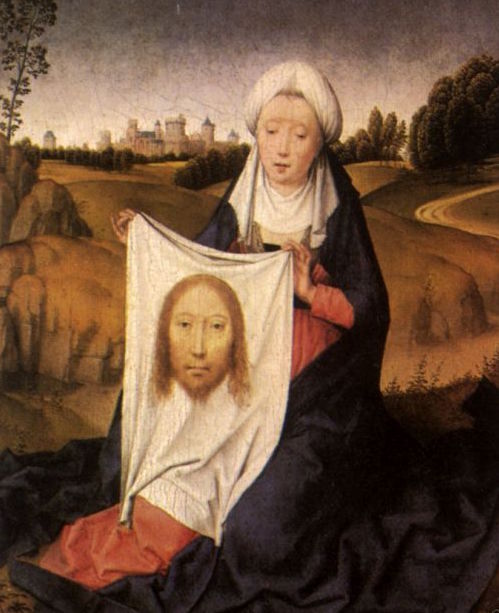
Bullfighting And Tragedy
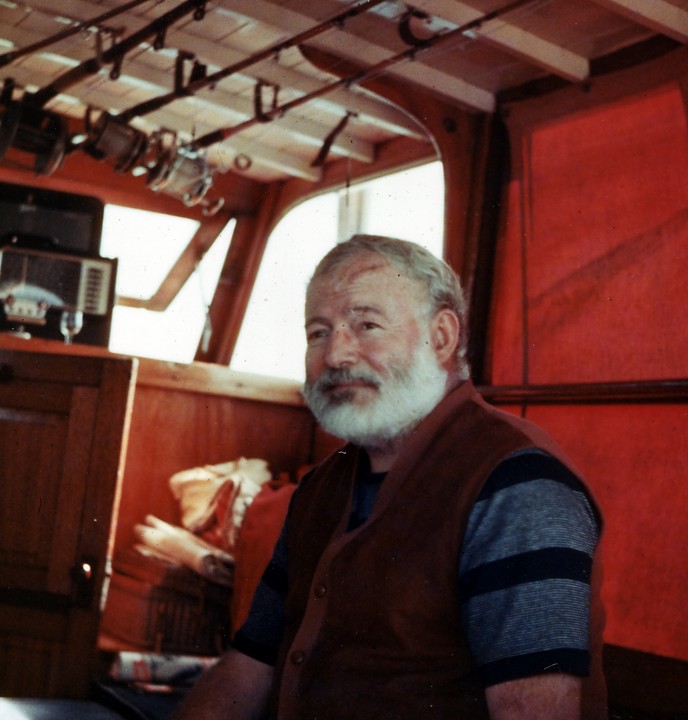 In 1923 Ernst Hemigway went to Spain , where he was introduced to bullfighting.
In 1923 Ernst Hemigway went to Spain , where he was introduced to bullfighting.
Death In The Afternoon was Hemingway’s tribute to bullfights. He often referred to and admire the crazy gesture in the face of death and in the bullfight he had an opportunity to contemplate that. For Hemingway the Matadores were living héroes. All his work is a dialog with death. All his Works are tragedies. Their main characters always die . An is this tragical view of existence what explains his passion for bullfighting. Bullfights are real tragedies where the actors really die. Man and humanity are placed at death as the bull and bullfigther are . The world is an arena where you can only survive fighting.
Meaning and origin of the word Veronica in the context of bullfighting
Ernst Hemingway (Death In The Afternoon) explained the meaning and origin of the word “Verónica” in bullfighting context:
“When the bull came out did you notice that one of the banderilleros ran across his course trailing a cape and that the bull followed the cape driving at it with one horn? They run him that way always, at the start, to see which horn he favors. The matador, standing behind his shelter, watches the bull run by the trailing cape and notices whether he follows the zig-zag-ging cape on both his right and his left sides, this showing whether he sees with both eyes and which horn he prefers to hook with. He also notices whether he runs straight or if he has a tendency to cut ground toward the man as he charges. The man who went out with the cape in both hands after the bull had been run, and cited him from in front, standing still as the bull charged, and with his arms moving the cape slowly just ahead of the bull’s horns, passing the bull’s horns close by his body with a slow movement of the cape, seeming to keep him controlled, in the folds of the cape, bringing him past his body each time as he turned and recharged; doing this five times and then finishing off with a swirl of the cape that turned the man’s back on the bull and, by cutting the bull’s charge brusquely, fixed him to the spot; that man was the matador and the slow passes that he made were called veronicas and the half pass at the end a media-veronica. Those passes were designed to show the matador’s skill and art with the cape, his domination of the bull and also to fix the bull in a certain spot before the entry of the horses. They are called veronicas after St. Veronica who wiped the face of Our Lord with a cloth and are so called because the saint is always represented holding the cloth by the two corners in the position the bullfighter holds the cape for the start of the veronica. The media-veronica that stops the bull at the end of the passes is a recorte. A recorte is any pass with the cape that, by causing the bull to try to turn in less than his own length, stops him brusquely or checks his rush by cutting his course and doubling him on himself.”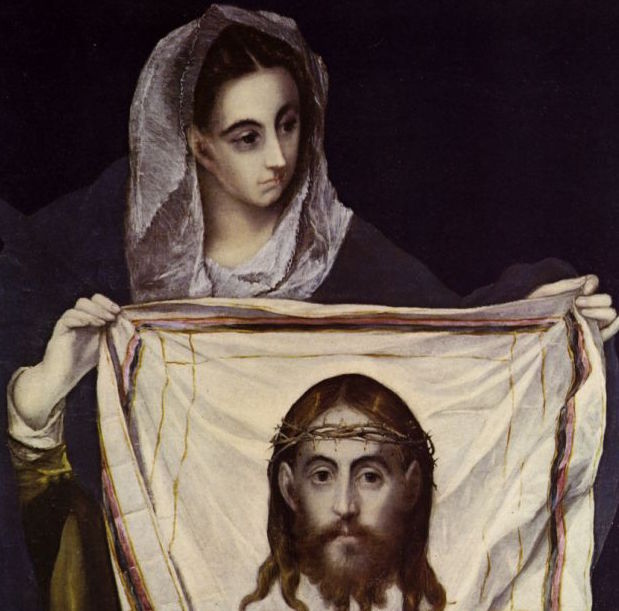
Santa Verónica con Santa Faz by El Greco. Museo de Santa Cruz, Toledo.
Picasso And Bullfighting
Pablo Picasso (1881-1973) is one of the greatest spanish artists. He was Exceptionally prolific throughout the course of his long life..
Bullfighting was present in Picasso’s life since childhood . As a child he attended frequently bullfights in Malaga, where he was born in 1881. After moving to Provence he often went to the arenas of Arles, Nîmes or Vallauris.The bullfight was a subject Picasso returned to frequently, particularly from the mid-1950s.He always was inspired by bullfighting and he often used its symbols in his paintings. The bull, kind of alter ego, represents different aspects or faces of human behavior like violence, love, sexuality. Picasso’s friend and biographer Roland Penrose has written that, apart from his enjoyment of the action, ‘the main involvement for Picasso was not so much with the parade and the skill of the participants but with the ancient ceremony of the dramatic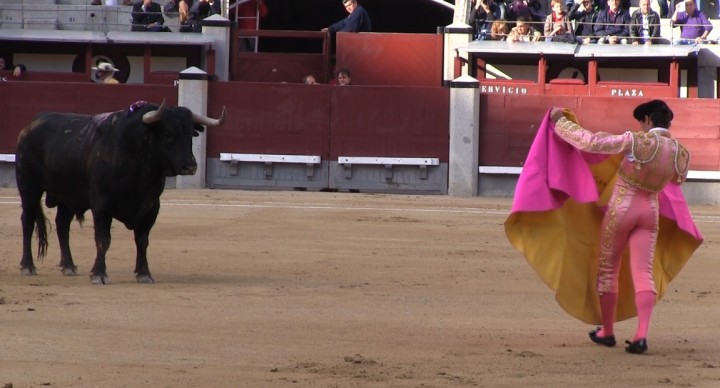 triumph of man over bull
triumph of man over bull
Goya And Bullfighting
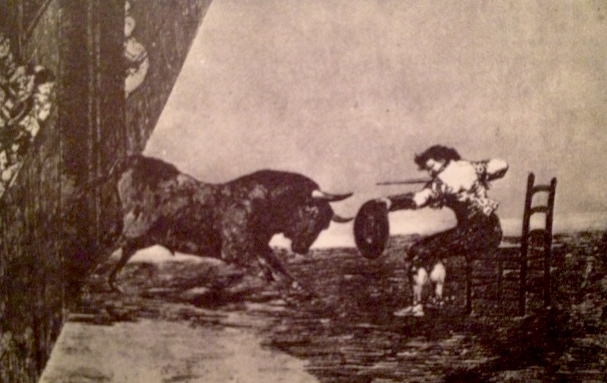 “Temeridad de Martincho en la Plaza de Zaragoza” is the title of this powerful engraving by the great spanish artist Francisco de Goya.
“Temeridad de Martincho en la Plaza de Zaragoza” is the title of this powerful engraving by the great spanish artist Francisco de Goya.
It seems that Goya witnessed in Zaragoza how the famous bullfighter Martincho killed a bull sitting on a chair, with his feet tied and using a hat instead of the Muleta .
This episode probably impressed the artist intensely, because he made several engravings on it.
The Bullfighter’s Team
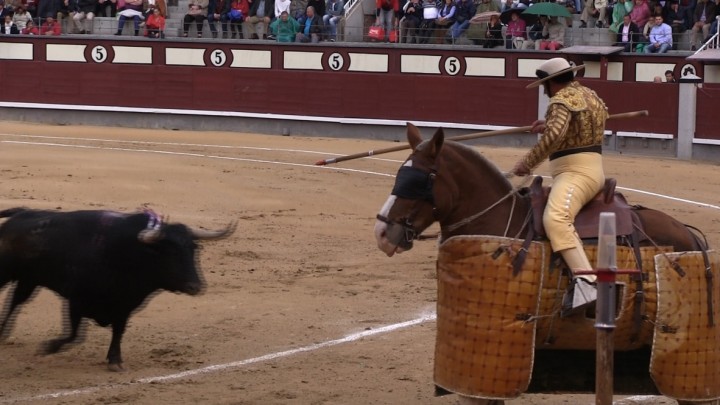 Three bullfighters usually kill six bulls. According law bulls must be four or five years old, without physical defects, and armed with pointed horns. Before the show a veterinarian examines them in order to see if all of them meet the legal requirements. The men in charge to kill bulls are called “Madadores”. Each “Matador” have a Cuadrilla, a team of five or six men. Three of them help him using the cape and jabbing the bull with Banderillas. The other two are called Picadores and they always fight on horse back. The main objective of the Stage of “Banderillas” is to revive the bull without reducing its strength in order to prepare it for the next stage: The Stage of Muleta (Suerte de Muleta). Three bullfighters’ assistants or sometimes the bullfighter him or herself jab the bull’s back with three pairs of “Banderillas”. The bull feels a sharp pain when the “Banderillas” have pierced its back.
Three bullfighters usually kill six bulls. According law bulls must be four or five years old, without physical defects, and armed with pointed horns. Before the show a veterinarian examines them in order to see if all of them meet the legal requirements. The men in charge to kill bulls are called “Madadores”. Each “Matador” have a Cuadrilla, a team of five or six men. Three of them help him using the cape and jabbing the bull with Banderillas. The other two are called Picadores and they always fight on horse back. The main objective of the Stage of “Banderillas” is to revive the bull without reducing its strength in order to prepare it for the next stage: The Stage of Muleta (Suerte de Muleta). Three bullfighters’ assistants or sometimes the bullfighter him or herself jab the bull’s back with three pairs of “Banderillas”. The bull feels a sharp pain when the “Banderillas” have pierced its back.
Bullfighting with the “Muleta” requires bleeding the bull of its strength, brought on by the actual bleeding that occurs when the lance punctures the bull’s back. The Stage of Varas is the phase in which the bull is lanced by the Picador in order to weaken it and prepare it for the Stage of Muleta (Suerte de Muleta). The bleeding that depletes the bull of its energy must not be excessive but just enough to calm its frenetic reactions. The Stage of Varas is also a sort of test to gauge the fierceness of the bull. Only two Picadores can be present in the bullring at the same time.
Two white circles painted on the sand in the ring create a boundary within which the “Picadores” must remain.
Different Ways Of Bullfighting With The Cape: El Farol
 The members of the matador’s team and the matador face the bull with the cape. In the first two stages of the bullfight, the cape is used to “situar en suerte”, in other words, to take the bull to an ideal spot to be jabbed by the Picador and to be stabbed in the neck with the “Banderillas”.
The members of the matador’s team and the matador face the bull with the cape. In the first two stages of the bullfight, the cape is used to “situar en suerte”, in other words, to take the bull to an ideal spot to be jabbed by the Picador and to be stabbed in the neck with the “Banderillas”.
But the bullfighter also uses the cape artistically. There is a wide range of ways of using it. One of them is El Farol
El Farol is attributed to Manuel Domínguez, who succeeded with it in Madrid on May 13, 1855 . In it’s initial phase is similar to the Veronica, but at the moment of removing the cape from the face of the bull the bullfighter lifted it, turn it over his head and then put it back to its first position.
Preliminaries: The Randon Draw
Ernst Hemingay described in detail (“Death In The Afternoon”) the preliminaries of bullfights. One of the most important is the random raw ( El Sorteo)
In a traditional bullfight three bullfighters have to bullfight six bulls. It means that two bulls correspond to each Matador. How do they decide which two bulls will be killed by each bullfighter? This is decided by a random draw
The morning of the day on which the bullfight is held, representatives of the three Matadores, go to the b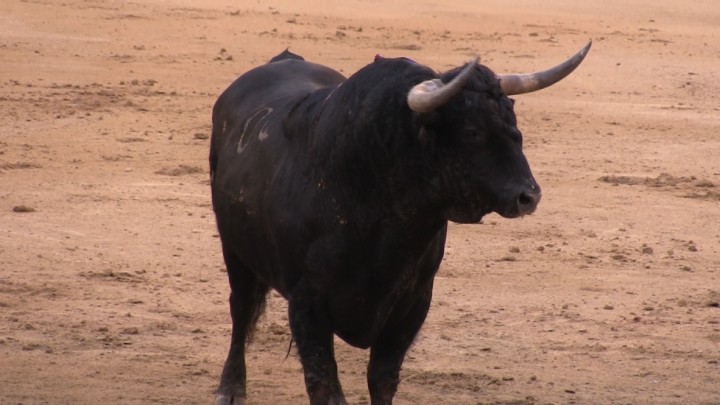 ullfighting ring in order to examine the bulls and attend later the random draw that will decide which bulls will be fight by each bullfighter. Bullfighters always desire to fight a good bull, a bull not too big and strong, without too large horns and high neck and with good sight so that it can react to colors and movement..
ullfighting ring in order to examine the bulls and attend later the random draw that will decide which bulls will be fight by each bullfighter. Bullfighters always desire to fight a good bull, a bull not too big and strong, without too large horns and high neck and with good sight so that it can react to colors and movement..
Art Of Bullfighting And Bravery
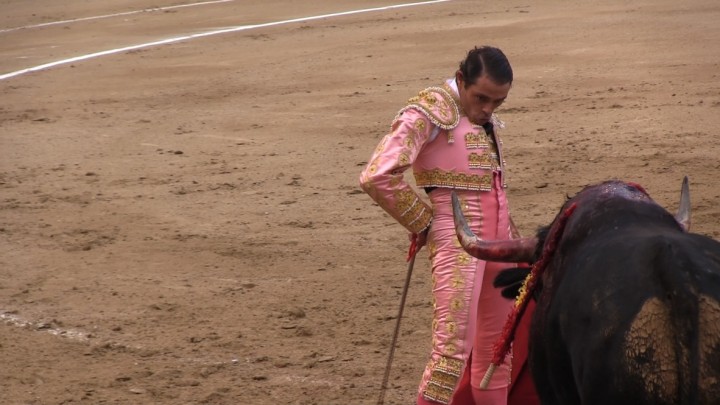 As Ernst Hemingway explained clearly (Death In The Afternoon, Chapter 3) , although it is improbable the expert bullfighter to be gored by the bull, he can increase the mortal danger as much as he wants. But the bullfighter must always increase the risk by following certain rules and not in an irrational and reckless way. In other words, he must do what he knows to do in the most dangerous way. The Matador will be severely criticized if he rushes into danger in a crazy way, ignoring the principles of the art of bullfighting. He must always subdue the bull, guiding himself by his knowledge and his art. Yes, the bullfighter must be brave, but this bravery must be rational.
As Ernst Hemingway explained clearly (Death In The Afternoon, Chapter 3) , although it is improbable the expert bullfighter to be gored by the bull, he can increase the mortal danger as much as he wants. But the bullfighter must always increase the risk by following certain rules and not in an irrational and reckless way. In other words, he must do what he knows to do in the most dangerous way. The Matador will be severely criticized if he rushes into danger in a crazy way, ignoring the principles of the art of bullfighting. He must always subdue the bull, guiding himself by his knowledge and his art. Yes, the bullfighter must be brave, but this bravery must be rational.
